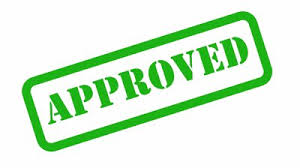 8.6 Release of products and services
8.6 Release of products and services
This week’s topic, “release of products and services” is a nuts and bolts component of most quality systems. As products and services are manufactured or created, there are typically repetitive steps used to fulfill the manufacture or creation of the product/service. And it is very typical for there to be verification activities at each step, prior to it progressing to the next, to ensure each step is done correctly and the output of that step meets requirements. This is typically done through some type of inspection or verification. “Inspection” doesn’t necessarily mean the old notion of an inspector actually giving the product a onceover. It may certainly be something internal to the process, error proofing, automated verification, etc.
But the standard is very clear on the requirement that steps be put in place to ensure all products/services meet expectation prior to release.
“The organization shall implement planned arrangements, at appropriate stages, to verify that the product and service requirements have been met.” This planning will almost certainly have been included as the product realization processes are/were defined. The “requirements” of the product/service must defined, and then methods to ensure they have been met must be defined at appropriate stages.
“The release of products and services to the customer shall not proceed until the planned arrangements have been satisfactorily completed, unless otherwise approved by a relevant authority, and as applicable, by the customer.” In the planning process, the requirements are defined and this statement requires that the requirements must be checked and met prior to release to the customer. There are caveats that parties other than the actual producer may perform the verification, but the producer is still responsible for ensuring the steps are taken.
“The organization shall retain documented information on the release of products and services. The documented information shall include:
a) evidence of conformity with the acceptance criteria;
b) traceability to the person(s) authorizing the release.”
This used to be interpreted as requiring a final inspection document of some sort which specifically states “pass/fail” or “approved” and a signature. Technology and automation, in the absence of a piece of paper, can certainly suffice so long as the evidence of conformity and traceability to an authorized person can be established.
THIS WEEK’S HOMEWORK
Start with a consideration of the products/services your organization produces. Next, take a look at the steps used to create them. In each case, are they defined? Are the requirements for acceptability defined? Are methods in place to confirm acceptability? Is documented information available as evidence of each? Next week, we’ll roll right into “nonconforming product/service” so be sure to give this topic a good look before we get there!
